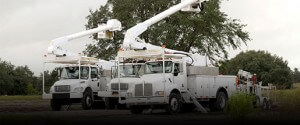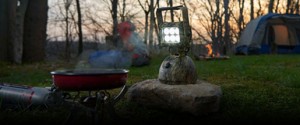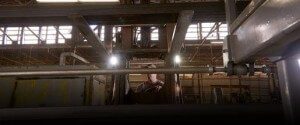Electrical Connections
- Trailer Connectors keyboard_arrow_right
- Air Products keyboard_arrow_right
- Terminals & Connectors keyboard_arrow_right
- Wire & Cable keyboard_arrow_right
- Support & Protective keyboard_arrow_right
- Switches & Electrical Assemblies keyboard_arrow_right
- Battery Connectors & Cables keyboard_arrow_right
- Kits & Tools keyboard_arrow_right
Company
- Company Profile keyboard_arrow_right
- Careers keyboard_arrow_right
- Case Studies keyboard_arrow_right
- Contact Us keyboard_arrow_right
- Media Center keyboard_arrow_right
- Grote News keyboard_arrow_right
- Trade Shows & Events keyboard_arrow_right
- Quality keyboard_arrow_right
- Star Safety Technologies by Grote keyboard_arrow_right
Tech Support & Information
Customer Information
General Tips To Prolong Equipment Lighting
Never use a test probe to pierce wire insulation
- When troubleshooting lighting complaints never pierce the wire insulation
- Wicking action takes place which causes moisture to travel along the wire strands and corrode critical connections along the complete connection – “salt creep”.
- If probing a harness or wire is unavoidable, make sure the puncture is properly sealed – understand that the Ultra-Blue-Seal™ system is a modular sealed system that must not be cut into – especially for warranty purposes. Testing should take place at each termination point along the main, rear sill, jumpers, pigtails and lamp itself. Replacement then does not need to be the whole system, but simply the damaged extension area.
To correct voltage problems, discover the real cause
- Under-voltage often is caused by poor electrical connections. To correct under-voltage or illumination problems, don’t just turn up the voltage, find out what caused the under-voltage problem.
- Over-voltage is causes major damage to lamps and batteries.
Many discarded lamps are still in good condition
- Do not simply “assume” when solving lamp problems – explore all avenues to make sure you are identifying the true source of a problem. Make sure you are not simply fixing a symptom of a greater problem.
- First, test with either a meter, power supply, or battery. Our male and female tester are perfect for this (87810 and 87820).
- Then if you desire, open the lens on a discarded lamp and examine the bulb. It will help tell you what failed. For example:
- A bulb with stretched or broken filaments was subjected to heavy vibration.
- A yellowish, whitish of bluish glaze on the bulb indicates a rupture in the bulb glass envelope and a possible leak.
- A dark, metallic finish indicates old age.
- A black, sooty bulb indicates a poor seal in the bulb.
- Test all lamps one time before you discard them. General findings show that up to 40% of all lamps sent back are still in good operating condition. The ones that aren’t working can be turned over to your lamp supplier.
All lamps will last longer if they run cool
- Dirt on lenses increases the heat, so keep them as clean as possible. Other people can see your rig, and that is one of the purposes of the lighting system (besides safety) – to be seen.
- Heat is one of the most damaging conditions to a standard incandescent bulb, right up to a cluster of LEDs, which can also be damaged by heat. For this reason the Grote 4″ LED offers significant heat benefits against the competitors plastic housing as the anodized aluminum dissipates the heat into the trailer body.
- All lighting must breathe to eliminate the damage from heat build-up and thus shortening of bulb/lamp life.
Treat the electrical system as you would the chassis
- Lubricate sockets, pigtails, battery terminals and connections with Ultra-Seal Sealant (99170) “non-conductive” anti-corrosion compound. Use the proffered Grote small tube of grease for lubricant.
- The purpose of the sealant is to totally encapsulate and protect against corrosion and water.
- Do not use sodium-based greases. Sodium will emulsify if it ever comes in contact with water.
Inspect for improper ground connections
- This is a major cause of lamp failure, especially when the trailer is used for a ground.
- When lamps are grounded through the lamp housing, make sure there is a clean connection (ie. metal to metal).
- Also, a fifth wheel ground strap may be used for added protection on the chassis ground system.
Look for loose, bare or unsupported wire and fixtures
Harnesses an wiring should be on the underside of top frame members rather than on the bottom where dirt and road splash collect.
Always replace wiring trailer light cables and harnesses with an equal or heavier gauge of wire (From original specifications)
If you don’t, you may cause unnecessary problems. See our catalogue for additional wire gauge information on specification. This product and process mentality provides for proper gauging.
On older trucks, you should never crank the truck while any lights or accessories are on
- Also, never leave markers/clearance and hazard lights on when parked against a dock. Melted lenses are a sure sign that the vehicle has been parked against the dock while the lights were on.
- Always remember that the trend is towards reduction of power consumption, and voltage surges are extremely damaging to wiring or lighting.
Inspect the grommets that house the lamps
- As the grommets age, they eventually will deteriorate from sunlight, ozone and harmful chemicals.
- New grommets restore shock protection, security and improves appearance.











